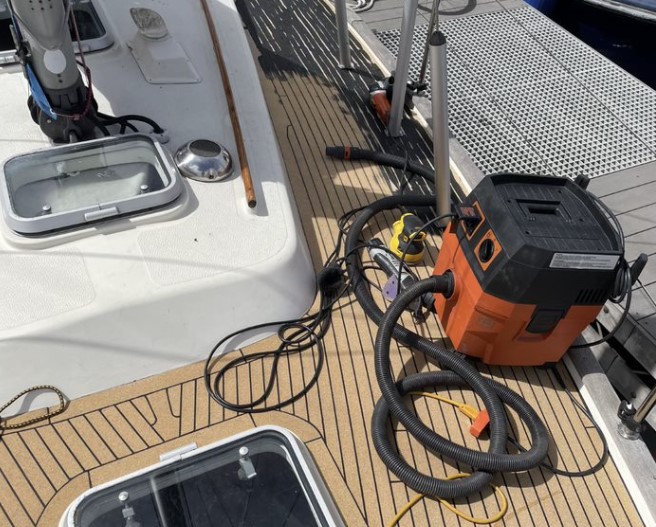 Exterior view of the tent I built over the boat. This tent lasted over a year. |
 Interior view of the test where you can see the PVC frame. |
 Labeling and carefully removing the old deck. |
 Here I am removing planks and you can see the big bag of screws I collected. |
 A view of the foredeck with showing the number of holes I had to fill. |
 With the surface smooth and clean, I should have just glued the new deck on. Instead I primed. |
 With the two part primer on. At this point I probably could have painted if I wanted. |
 The decking arrived in a few weeks. |
 Another view of the new decking material. I kept it down below to keep it dry. |
 I would do a few square feet at a time, spreading the glue with a grooved spreader. |
 I used tape to mask off the areas where the planks stoped. |
 This is a look at the old drain from when I replaced the genoa track core. |
 New drain going in with the deck. |
 Here you can see the raised seam after the caulk is applied. Use a putty knife with firm pressure. |
 The seams are filled and ready for sanding. So many seams... |
 Sanding the deck with an 8-inch Fein sander. This was a lot of work. |
 Having good equipment helps. The fein sander with vacuum was very useful. |